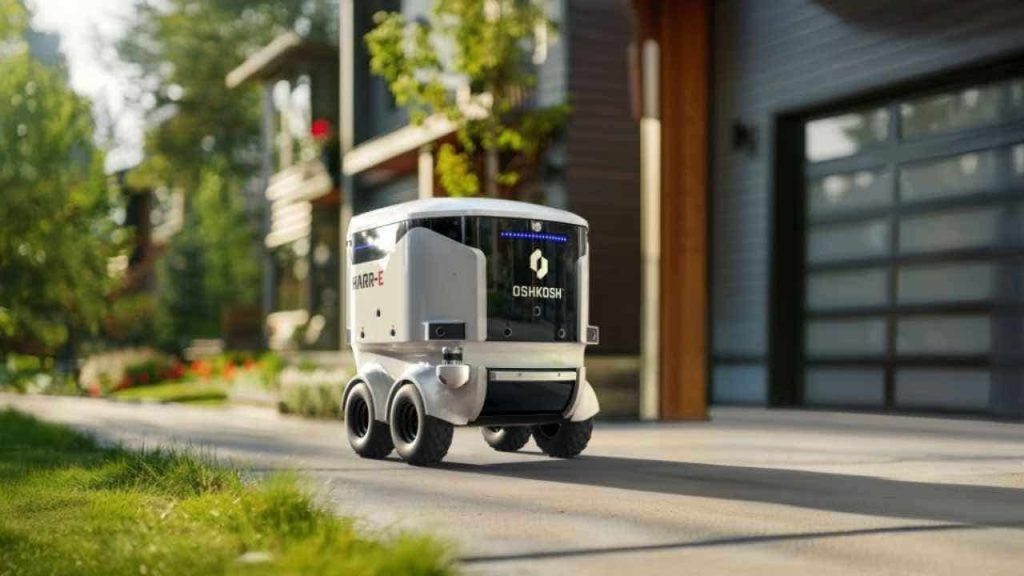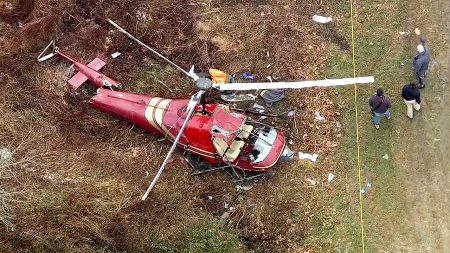The Future of Trash Collection: How AI Robots Could End Garbage Day As We Know It
In a world where technology continues to transform our daily routines, even something as mundane as taking out the trash may soon get a high-tech makeover. Oshkosh Corporation, a major American manufacturing company, has unveiled HARR-E, an autonomous trash-collecting robot that could revolutionize how we handle household waste. This intelligent machine promises to eliminate the hassle of dragging heavy bins to the curb and the early morning disruptions from noisy garbage trucks. Instead, HARR-E comes to your door on demand, much like ordering a rideshare service, allowing residents to schedule waste collection at their convenience rather than adhering to rigid municipal schedules.
HARR-E represents a significant technological advancement in waste management. Using a sophisticated array of AI-enabled sensors, cameras, and self-driving navigation systems, this robot can travel independently through neighborhoods to collect trash. The user experience is remarkably straightforward – residents can summon HARR-E through a smartphone app or even by voice command via virtual assistants like Alexa or Google Assistant. When called, the robot quietly travels from its central hub to the requesting home, opens its lid to receive waste, and then returns to unload before recharging for its next assignment. This technology is particularly suited for planned communities and business parks that already utilize shared waste facilities, though traditional trucks would still transport the consolidated waste to recycling centers or landfills. The potential benefits extend beyond mere convenience, offering solutions to common waste management frustrations like missed pickups and overflowing bins.
The credibility of HARR-E as more than just a futuristic concept was reinforced when it received a CES Picks Award, chosen by industry experts from among thousands of innovations showcased at the Consumer Electronics Show. This recognition suggests that HARR-E represents a viable solution rather than just technological showmanship. The advantages of this system are multifaceted: neighborhoods would experience less noise pollution without early morning garbage trucks; streets would remain cleaner as waste gets collected before accumulating; residents would enjoy the flexibility of on-demand service; and the electric operation of these robots would produce fewer emissions compared to conventional diesel-powered trucks. Oshkosh developed this technology through its Pratt Miller business unit, known for its expertise in robotics and autonomous systems, lending further credibility to the project’s potential real-world application.
Beyond just collecting trash, Oshkosh is simultaneously developing AI-powered recycling systems capable of scanning waste bins to identify items that don’t belong. This innovation addresses a critical issue in recycling: contamination. Currently, a single misplaced item can contaminate an entire load of recyclables, resulting in the whole batch being diverted to landfills. By detecting and preventing such contamination at the neighborhood level, these technologies could significantly improve recycling efficiency. When combined with sustainable consumer practices like donating or purchasing second-hand items instead of discarding them, these advancements could help communities substantially reduce their waste footprint. The integration of such intelligent systems represents a holistic approach to waste management that extends beyond mere collection to encompass more effective recycling and waste reduction.
For residents of communities that adopt systems like HARR-E, the practical implications would be immediately apparent in daily life. The familiar routine of rushing to put bins out before collection day or returning home to find that pickup was missed would become obsolete. Instead, residents could simply schedule waste collection through their phone or smart speaker whenever it’s most convenient for them. This on-demand model shifts control from municipal schedules to individual preferences, potentially eliminating “garbage day” altogether. Furthermore, the implementation of smarter recycling tools could amplify the impact of individual recycling efforts by ensuring that properly sorted materials actually reach recycling facilities rather than being redirected to landfills due to contamination. This represents a significant step toward making waste management both more convenient for residents and more effective for environmental sustainability.
As we look toward a future where robots like HARR-E might handle our garbage, we’re witnessing the next evolution in how technology can simplify everyday chores while promoting cleaner, more sustainable communities. The transformation of waste collection from a noisy, scheduled disruption to a quiet, on-demand service exemplifies how innovation continues to reshape even the most established aspects of daily life. While the adoption of such technologies will likely vary by community and face implementation challenges, HARR-E demonstrates the potential for smarter waste management systems that benefit both residents and the environment. As with many technological advances, the question remains whether people will embrace this new approach or prefer traditional methods. However, HARR-E represents an intriguing glimpse into a future where even taking out the trash becomes simpler, cleaner, and more aligned with our increasingly on-demand lifestyle expectations.











